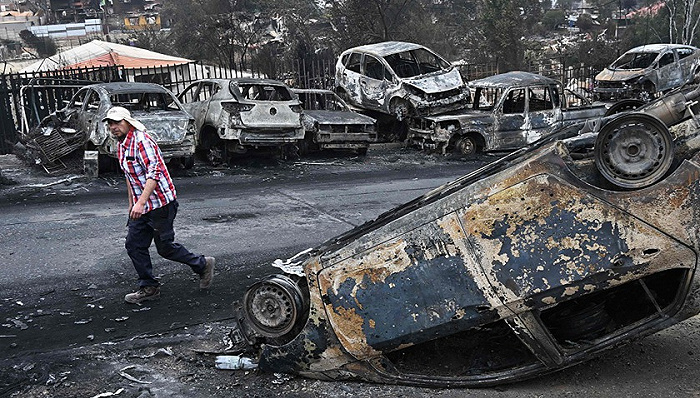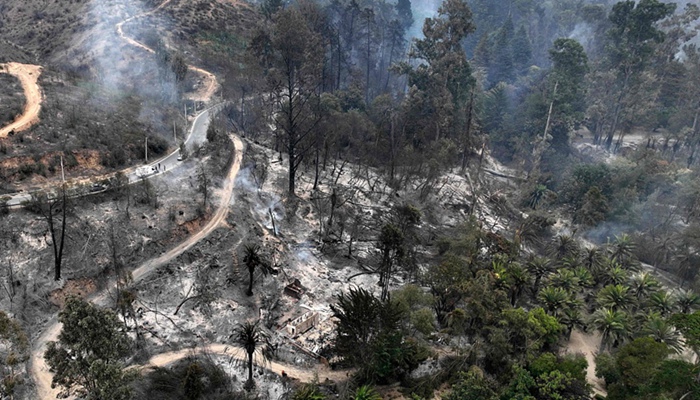In 2023, Universal will once again join the Year of El Ni ñ o. The United Nations Global Weather Organization announced in July of that year that the El Ni ñ o phenomenon first flashed in the Pacific Ocean in seven years. By December, the El Ni ñ o sign will enter its peak period.

Joining 2024, El Ni ñ o continues to lead the way. In the northern hemisphere, rainfall and snowfall have increased in Europe, and drought concerns in Spain have intensified; A temperature roller coaster flashed in the western region of Canada, plummeting from minus to 18 ℃ before returning to below zero.
In the southern hemisphere, South America, which is currently in summer, is experiencing extreme low temperatures and continuous drought. Colombia, Chile, Argentina, and other countries are dominating the mountains and rivers, and the mountains and rivers in central Chile have formed hundreds of people returning to heaven. Researchers speculate that the impact of El Ni ñ o on South America will continue until April or May this year.
Hundreds of Chilean people return to heaven
Summer is the peak season for Chilean mountains and rivers, usually starting in December. But due to the continuous drought, this year’s mountains and rivers have suffered serious casualties.
On February 2nd, the Valparaiso region in central Chile suddenly took over the mountains and waters, and the death toll dropped to 112 on the evening of the 4th. Chilean leader Boric announced that Chile has joined the national emergency situation and referred to this round of landscape as the “most serious comedy” Chile has suffered since the 2010 earthquake.
According to statistics from the Chilean Disaster Preparedness and Response Bureau, there were 161 flash floods across Chile last Sunday, of which 102 were out of control. The most severely affected are the coastal tourist city of Vi ñ a del Mar in the Valparaiso region and surrounding cities such as Quilpu é.
The eastern part of Binyadelma is known for its residential areas, with at least 1600 people homeless. A nearby botanical garden, built in 1931, is also known as the “Once”. The mayor of the city, Macarena Ripamonti, stated that at least 370 people were lost in Binadelma and surrounding areas. This means that the number of deaths can still rise.
Chilean leader Boric explained that abnormal low temperatures, dryness, and gentle winds are the main reasons for the rapid expansion of mountains and rivers in this round. The temperature in central Chile reached 40 ℃ last weekend. But Chilean media believe that the authorities did not issue timely evacuation photos, which also resulted in a high number of deaths.
The Chilean Disaster Preparedness and Response Bureau pointed out that last Friday, local authorities issued a warning on the water situation and issued a dispersed instigation, but did not request immediate evacuation of residents. Regina Figueroa, a resident of the surrounding area of Binadelma, stated that her area had already been hit by the mountains and rivers when she received a scattered instigation on Friday.
Figueroa recalled that at that time, black smoke was rolling around and a storm was raging. “I didn’t see anything, everyone was shouting.” She chased her 5-year-old grandson to a high place before hiding a disaster, but her two relatives died in the mountains and rivers.
Although the rapid expansion of mountains and rivers in this round is closely related to weather conditions, the Chilean authorities are currently investigating whether it can be caused by human factors. The Mayor of Valparaiso Region, Rodrigo Mundaca, pointed out that there were four water points in this round of landscape that started simultaneously, and the authorities are investigating the responsible persons.
Chilean Finance Minister Marcel estimates that in the Valparaiso region alone, the economic losses caused by landscape formation will reach hundreds of millions of dollars. Due to power supply disruptions caused by water police, Chile’s National Kerosene Company (ENAP) has announced the temporary opening of a refinery.
The drought and low temperatures that began last year have already affected Chile’s wine industry, making Chile the largest wine exporting country in South America. The budget for domestic grape and wine production in Chile increased by 20% last year due to the impact of drought and mountains and rivers.
Among wine producing countries in South America, low temperature and dryness also led to a production increase of over 30% in Brazil and Uruguay last year.
Continuous impact of El Ni ñ o
Before Chile declared a national emergency due to its mountains and rivers, Colombia declared a natural disaster in January. Throughout January, Colombia was in a state of “water and water duality”.
The western region of the country experienced landslides and mudslides due to large-scale rainfall, resulting in more than 40 deaths. At the same time, the surrounding area of the capital Bogot á is constantly surrounded by mountains and rivers, with 549 water police incidents occurring throughout Colombia within a month, covering an area of 35000 hectares. In response to the crisis, Colombian authorities have driven domestic support agreements and requested domestic relief.
Argentina, Venezuela, Brazil, Uruguay, Paraguay and other countries are also experiencing extreme low temperatures. The highest temperature in Paraguay has dropped to 48 º C, and a low temperature warning has been issued in 21 provinces and territories of Argentina.
The Los Alerces National Garden, located in central Argentina and listed as a world heritage site, produces mountains and waters with a drainage area exceeding 3000 hectares. The Argentine capital Buenos Aires recorded its highest temperature drop to 38.1 º C last Thursday, and Argentina is a major exporter of wheat, corn, and soybeans worldwide.
According to B á rbara Tapia Cort é s, a weather expert at the Regional Office for the Americas, many South American countries will experience historic low temperatures this summer due to the El Ni ñ o phenomenon, and rainfall will be lower than the same period in history, especially in Colombia, Venezuela, some parts of Brazil, Suriname, and Guyana.
Cortes warns that extreme weather fluctuations in the southern hemisphere will continue throughout the summer and early autumn. The impact of El Ni ñ o signs is expected to continue until April or May of this year. Usually, the global temperature will further decrease in the second year after the El Ni ñ o phenomenon occurs, and some scientists have speculated that this year will be hotter than 2023.
But the El Ni ñ o phenomenon is not the only cause of extreme weather in South America. The research on the construction of the national meteorological system at the end of January shows that the main reason for the historic drought in the Amazon River Basin since last year is the meteorological changes caused by the use of fossil fuels and deforestation, with El Ni ñ o playing only a minor role.
Scientists speculate that drought in the Amazon River basin will continue until the end of this year, while other scientists believe that the complete restoration of the Amazon River basin will take until 2026. The Amazon River flows through eight countries in South America, including Brazil, Colombia, Venezuela, and Peru.
